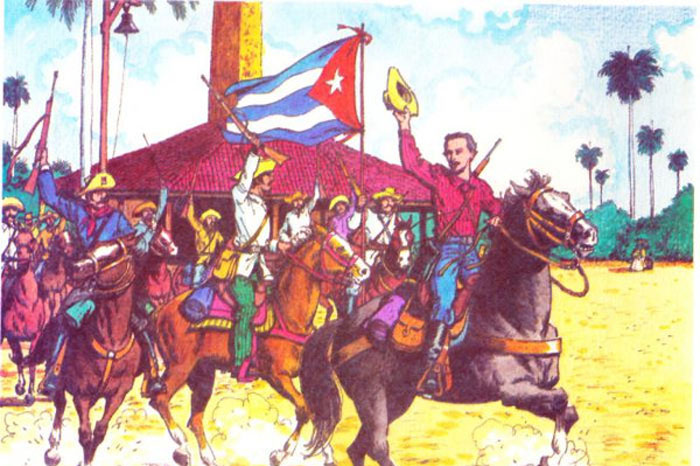
Havana, Nov 4.- Camagüey’s patriots were committed to the movement started by Carlos Manuel de Céspedes in Oriente, but for the uprising of October 10, 1868, doubts and indecisions still prevailed among some rich landowners about the best date to start the uprising Revolution, waiting to have greater military and financial resources, without missing others who doubted the success of the war and were inclined to the reformist path.
However, the firmness of the revolutionary leaders and the chance of the insurrection would impose the uprising of Camagüey on November 4, 1868 at the Las Clavellinas river pass, 13 kilometers from the city of Puerto Príncipe, where around 76 Camagüeyans gathered. They spoke out for independence, just as the brothers Augusto and Napoleón Arango did in other places, who took the hamlets of San Miguel de Nuevitas and Bagá and the town of Guáimaro.
In Las Clavellinas, Jerónimo Boza Agramonte, who took over as leader of 93 patriots, opened the documents that contained the instructions for the uprising, and the independence feat that Carlos Manuel Céspedes began in Demajagua thus integrated easterners and people from Camagüey.
Shortly before, Salvador Cisneros Betancourt, one of the main leaders of the Revolutionary Committee of that region, gave the order for the uprising upon learning of the imminent arrival of a ship through the port of Nuevitas, loaded with weapons for the colonial army operating in the eastern area, which imposed the immediate incorporation of Camagüey to prevent the arrival of supplies to the Hispanics.
Ignacio Agramonte, then newly married to Amalia Simoni, was not in Las Clavellinas because he was carrying out conspiratorial tasks in the city, but on November 11 he rose up at the El Oriente sugar mill, near Sibanicú, and immediately dedicated himself to training and train his disciplined cavalry and infantry, which would become legendary with their leader at the helm.
The story goes that he attended the meeting with the Homeland that November 11 dressed in a red striped shirt, one of the first gifts from his wife Amalia, who would accompany him to the jungle until she was detained by the Spanish and deported.
In the midst of these first efforts, Ignacio would emerge as a fundamental factor of unity and radicalism when on November 26, at the Whereabouts of the Mines meeting, he countered the idea of ??ending the uprising and demanded that they end “… once and for all.” "Lobbying, demands that humiliate, Cuba has no other way than to achieve its redemption, wresting it from Spain with force of arms."
After that event, the Camagüeyan patriots had their baptism of fire on November 28 against the troops of Blas Villate, Count of Valmaseda, who with 800 men from all three arms advanced along the railway line towards Nuevitas and faced a Mambí (Cuban independence fighters) ambush. , before which the Hispanic officer had no choice but to withdraw.
Camagüey’s uprising forced the peninsular command to redefine its strategy aimed at quelling the insurrection in the eastern zone, counting on the rest of the Island as a rearguard provider of the necessary economic resources coming mainly from the sugar industry, which would change when the call inextinguishable conflict began in the Port-au-Prince region and inevitably spread towards the center.
The patriots from Camagüey did not take long to stand out for their great military capacity and political radicalism, led by Major General Ignacio Agramonte, who would be fundamental for the consolidation of the first libertarian feat undertaken on October 10, 1868, with which the Hundred Years of War began. Fight of the Cuban people to achieve their true independence. (Text and photo: ACN)